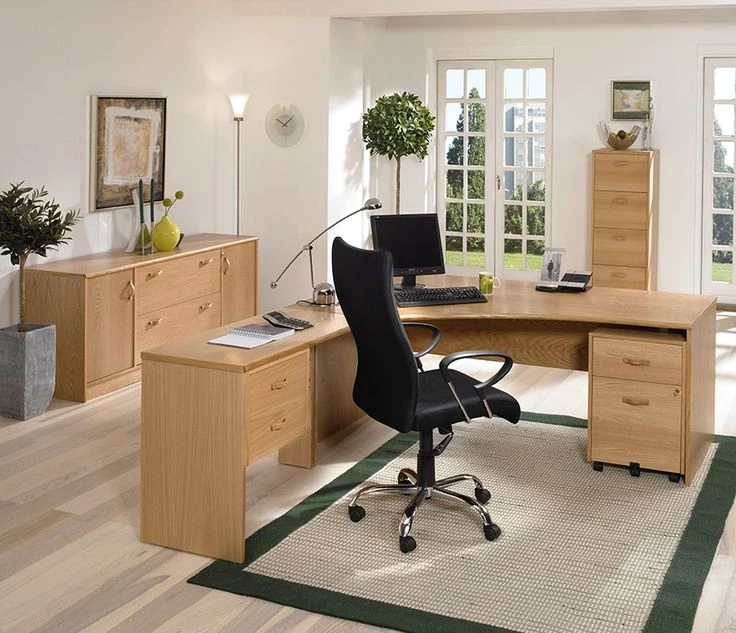Selecting the right furniture for your office is a critical decision that can significantly impact productivity, comfort, and overall business success. In this comprehensive guide, we will explore the essential factors to consider when choosing office rental furniture, providing you with a detailed roadmap to create an optimal working environment.
Understanding Your Office Needs
Before diving into specific furniture choices, it's crucial to assess the unique needs of your office. Every workspace has distinct requirements based on the nature of the work, the number of employees, and the available space. Consider the following aspects:
Type of Work: Determine the primary activities conducted in your office. Do employees need individual workstations, collaborative areas, or both?Employee Comfort: Ergonomics play a vital role in ensuring employee well-being and productivity. Look for furniture that supports good posture and reduces the risk of musculoskeletal disorders.Space Utilization: Efficient use of space can enhance workflow and create a more pleasant working environment. Plan the layout to maximize space without compromising comfort.Ergonomic Furniture: The Foundation of Productivity
Ergonomic furniture is designed to support the human body, promoting comfort and reducing the risk of work-related injuries. Here are key ergonomic furniture pieces to consider:
Ergonomic Chairs
Investing in high-quality ergonomic chairs is essential. Look for chairs with adjustable height, lumbar support, and armrests. Features to prioritize include:
Adjustable Seat Height: Ensure the chair can be adjusted to allow feet to rest flat on the floor, with thighs parallel to the ground.Lumbar Support: Proper lumbar support helps maintain the natural curve of the spine, reducing the risk of lower back pain.Armrests: Adjustable armrests support the forearms, reducing strain on the shoulders and neck.Sit-Stand Desks
Sit-stand desks offer flexibility by allowing employees to alternate between sitting and standing positions. Benefits include:
Reduced Risk of Health Issues: Alternating between sitting and standing can reduce the risk of obesity, diabetes, and cardiovascular diseases.Increased Productivity: Standing periodically throughout the day can boost energy levels and focus.Choosing the Right Desks
Desks are the primary workstations in any office. Selecting the right desks involves considering various factors:
Desk Size and Shape
Size: Ensure the desk is spacious enough to accommodate computers, documents, and other necessary items. Consider the available office space to avoid overcrowding.Shape: Different desk shapes serve different purposes. For instance, L-shaped desks are ideal for multitasking, while U-shaped desks provide ample workspace.Material and Durability
Material: Choose materials that are both durable and aesthetically pleasing. Common options include wood, metal, and laminate.Durability: Invest in high-quality desks that can withstand daily wear and tear. This ensures longevity and reduces the need for frequent replacements.Storage Solutions: Keeping Your Office Organized
Effective storage solutions are crucial for maintaining an organized and efficient workspace. Consider the following options:
Filing Cabinets
Size and Capacity: Choose filing cabinets that can accommodate your office's volume of documents. Consider vertical or lateral cabinets based on space availability.Lockable Options: For sensitive documents, opt for lockable filing cabinets to ensure confidentiality and security.Shelving Units
Adjustable Shelves: Adjustable shelving units provide flexibility to store items of varying sizes. They are ideal for storing books, binders, and office supplies.Wall-Mounted Shelves: Wall-mounted shelves save floor space and can be installed at convenient heights for easy access.Conference Room Furniture: Enhancing Collaboration
The conference room is a vital area for meetings, brainstorming sessions, and presentations. Selecting the right furniture can enhance collaboration and productivity.
Conference Tables
Size and Shape: Choose a table size that accommodates the typical number of participants. Round tables foster inclusivity, while rectangular tables are ideal for larger meetings.Technology Integration: Consider tables with built-in power outlets and cable management solutions to support electronic devices.Comfortable Seating
Ergonomic Chairs: Provide comfortable, ergonomic chairs to ensure participants remain focused and engaged during meetings.Stackable Chairs: Stackable chairs offer flexibility and easy storage when not in use, making them ideal for multi-purpose conference rooms.Reception Area: Making a Positive First Impression
The reception area is the first point of contact for visitors. Choosing the right furniture can create a welcoming and professional atmosphere.
Reception Desk
Design and Functionality: Select a reception desk that complements the overall office design. Ensure it has sufficient storage and workspace for reception tasks.Accessibility: Ensure the desk is accessible for both staff and visitors, including those with disabilities.Seating Area
Comfortable Seating: Provide comfortable seating for visitors, such as sofas or armchairs. Consider adding side tables for convenience.Aesthetic Appeal: Choose furniture that reflects your company's brand and creates a positive impression.Break Room Furniture: Creating a Relaxing Space
The break room is a space for employees to relax and recharge. Choosing the right furniture can enhance its comfort and functionality.
Dining Tables and Chairs
Size and Capacity: Select tables and chairs that accommodate the number of employees who use the break room simultaneously.Easy to Clean: Opt for materials that are easy to clean and maintain, ensuring a hygienic environment.Comfortable Lounge Furniture
Sofas and Armchairs: Provide comfortable seating options for employees to unwind during breaks.Entertainment Options: Consider adding entertainment options such as a TV or a game table to enhance the break room experience.Sustainable Furniture Choices
Sustainability is becoming increasingly important in office design. Consider eco-friendly furniture options to reduce your environmental impact.
Recycled Materials
Reclaimed Wood: Furniture made from reclaimed wood offers a rustic aesthetic while promoting sustainability.Recycled Plastics and Metals: Choose furniture made from recycled materials to minimize waste and support recycling efforts.Conclusion
Choosing the right furniture for your office is a significant investment that can enhance productivity, comfort, and overall employee satisfaction. By considering ergonomic design, space utilization, and sustainable options, you can create a functional and aesthetically pleasing workspace. Remember, the right furniture not only supports your employees but also reflects your company's values and brand identity.


